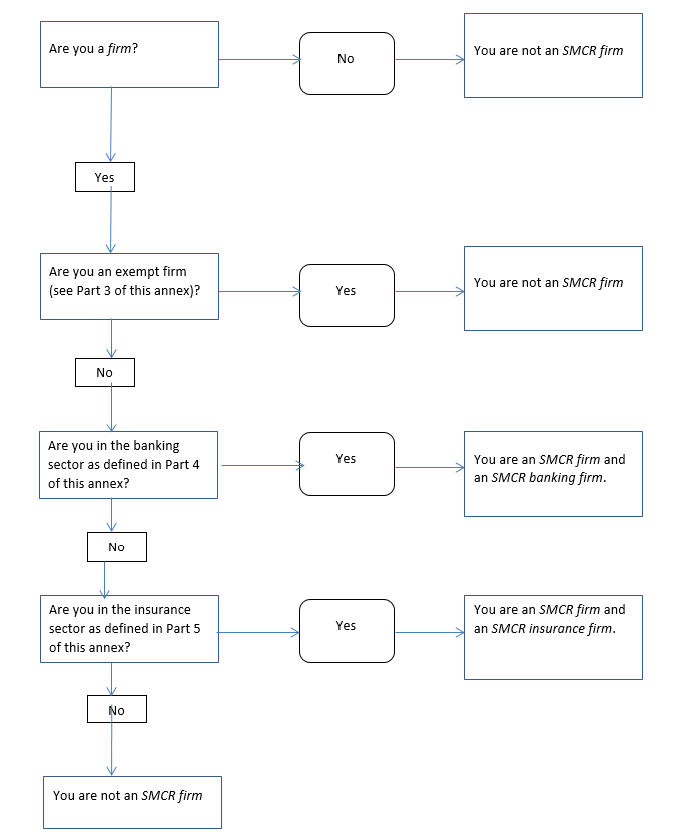|
The senior managers regime: Parts that apply to all firms
|
|
Pre-approval by the FCA of senior management (the FCA Handbook calls senior management subject to pre-approval SMF managers)
|
SUP 10C
|
|
Firm to be satisfied that a person is fit and proper before applying for them to be approved as an SMF manager by the FCA or PRA
|
This requirement is in section 60A of the Act. There is guidance on it in SUP 10C.10.14G (Vetting of candidates by the firm).
|
|
Annual assessment of fitness and propriety by the SMF managers’firms
|
This requirement is in section 63(2A) of the Act. There is guidance and related notification obligations in SUP 10C.14.18R to SUP 10C.14.25G (Notifications about fitness, disciplinary action and breaches of COCON).
|
|
A firm should carry out criminal records checks before applying for someone to be approved as an SMF manager.
|
SUP 10C.10.16R
(Criminal records checks and verifying fitness and properness)
|
|
A firm should ask for a regulatory reference before appointing someone to be an SMF manager, or to certain other senior management positions, and give one if asked to by another firm doing so.
|
SYSC 22
(Regulatory references)
|
|
Statements of responsibilities
This is a document that sets out the responsibilities that an SMF manager performs as part of their designated senior management function. It is prepared as part of the firm’s application to the FCA or PRA for them to be approved as an SMF manager. It should be updated after approval when there has been any significant change in the responsibilities of the SMF manager.
|
SUP 10C.11
(Statements of responsibilities).
Many of the requirements are in the Act itself but they are summarised in SUP 10C.11.
SUP 10C.11
also adds some further requirements, particularly about there being one statement of responsibilities per SMF manager per firm.
|
|
Duty of responsibility
This applies to SMF managers in all types of firm.
|
This is dealt with in section 66A(5) of the Act.
There is guidance on this in DEPP 6.2.9-AG to DEPP 6.2.9-FG.
|
|
The senior managers regime: Parts that apply to many firms
|
|
A firm should allocate certain specified management responsibilities among its SMF managers.
The FCA Handbook calls them FCA-prescribed senior management responsibilities.
|
SYSC 24
(Senior managers and certification regime: Allocation of prescribed responsibilities)
|
|
A firm should maintain a comprehensive and up-to-date document (called the management responsibilities map) that describes its management and governance arrangements.
|
SYSC 25
(Senior managers and certification regime: Management responsibilities maps and handover procedures and material)
|
|
A firm should ensure that, at all times, one or more of its SMF managers have overall responsibility for each of the activities, business areas and functions of the firm.
|
SYSC 26
(Senior managers and certification regime: Overall and local responsibility)
|
|
A firm should ensure that a person becoming an SMF manager has all the information and material that they could reasonably expect to have to perform their responsibilities.
|
SYSC 25.9
(Handover procedures and material)
|
|
The senior managers regime: Parts outside the Handbook
|
|
Criminal offence relating to a decision that causes a financial institution to fail
It applies to a UK SMCR banking firm but does not apply to a credit union.
It does not apply to any firm that is not a UK SMCR banking firm.
|
This is contained in section 36 of the Financial Services (Banking Reform) Act 2013
|
|
The certification regime
|
|
A firm should not permit an employee to carry out certain functions (certification functions) unless it has issued them with a certificate.
The certificate is only valid for a year. The firm will have to renew it if the employee is to carry on performing the function.
A firm may not issue or renew a certificate unless it is satisfied that the person is fit and proper.
Certification does not involve pre-approval by the FCA or PRA.
|
Most of the requirements of this regime are in sections 63E (Certification of employees by authorised persons) and 63F (Issuing of certificates) of the Act.
SYSC 27
(Senior managers and certification regime: Certification regime) describes the regime and explains which employees are covered.
|
|
A firm should ask for a regulatory reference before appointing someone to perform an FCA certification function (or a PRA equivalent) and give one if asked to by another firm doing so.
|
SYSC 22
(Regulatory references)
|
|
Conduct rules (applies to all firms)
|
|
Rules of conduct that apply directly to a firm’s workforce other than ancillary staff.
|
COCON
|
|
A firm should report breaches of COCON to the FCA.
|
Section 64C of the Act (Requirement for authorised persons to notify regulator of disciplinary action) and SUP 15.11 (Notification of COCON breaches and disciplinary action)
|
|
A firm should:
(a) ensure that all persons subject to COCON are notified of the rules that apply to them; and
(b) take all reasonable steps to ensure that they understand how COCON applies to them
|
These obligations are in section 64B of the Act (Rules of conduct: responsibilities of authorised persons).
There is guidance in COCON 2.3 (Firms: Training and breaches).
|

